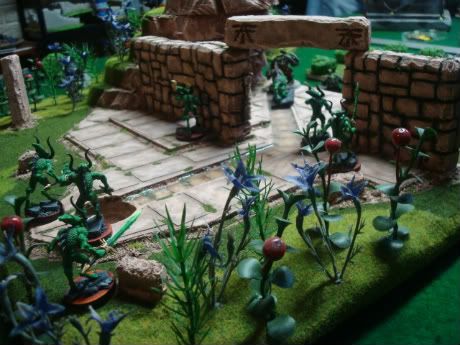
To any archaeologist, the ruins of K’Nosha would have been a find of a lifetime. To the orks that were marauding them, they were simply old rocks stacked on top of each other. Little did they know that their presence had awoken an evil that had been lying in dormant for over a century.
“Fools were the Old Ones for creating beings that embody chaos,” hissed the daemonette as it stepped from the gateway.
“Fool was your pathetic god for creating such weak acolytes as you,” roared the bloodletter from across the ruined plaza.
Each of the daemons began to move towards its rival, claws and daemonic blades rising to inflict the first wound. With a cackle, a horror of Tzeentch materialized between them and began to speak in an echo laden voice.
“We are here for the green glow of ork souls. Let us not forget that our master serves all of our gods equally”
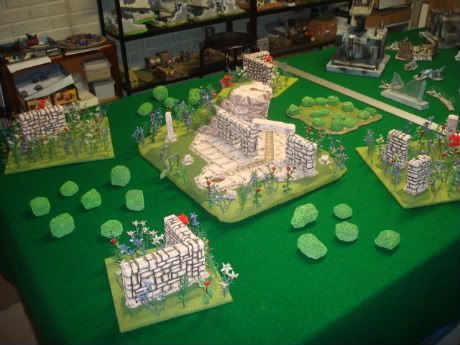
In this battle report, Ernie’s orks face the terrible onslaught of my chaos daemons. This was our first game of Killzone, so we elected to ignore the secondary mission and fate cards and just play a standard mission. Each of us built our armies based on the Adepticon rules which meant that we had 250 points with no more than 25 points spent on skills.
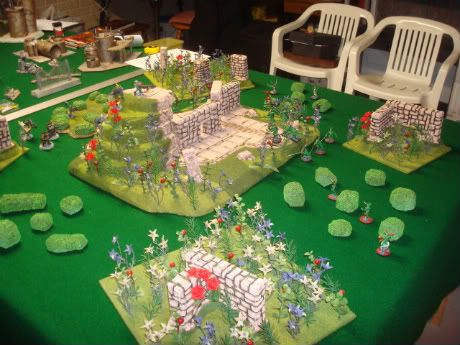
The mission we were playing was 12.2 : ENCOUNTER. IMO, this seemed to be the most basic mission, so we both felt like it was a good one for our first game of Killzone. When it came to designing my list, I decided to go with a mixture of daemons, thus allowing me to get a taste of how different units in the game would play.
6 Bloodletters
1 Fleshhound
4 Daemonettes
2 Horrors
1 Flamer
One of the first things that I realized when it came to building my list was that daemons start on the board. This makes a big difference to how I approached the list. The other thing I learned was that daemons of different gods could not come with 2” of each other. Not a huge deal, but since this was my first time out with Killzone, I drew a lot of attention to it.
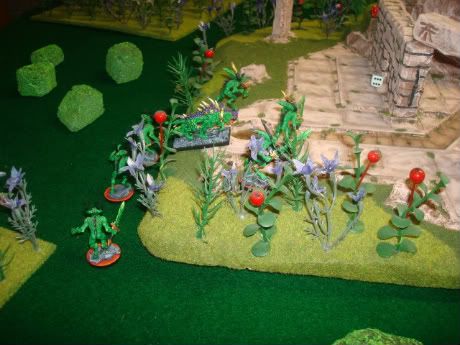
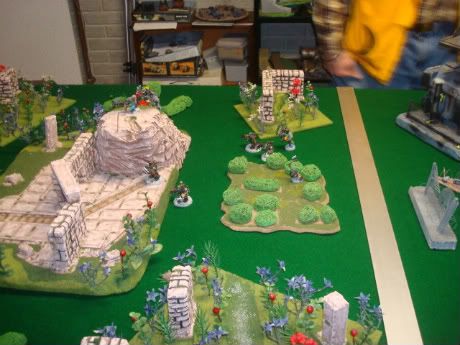
Another cool thing about Killzone is that it is not the typical six turns and it’s over type of game. There is also the fact that the order of play can change each turn, so plans can fall apart as quickly as they are stacked.
Early Turns
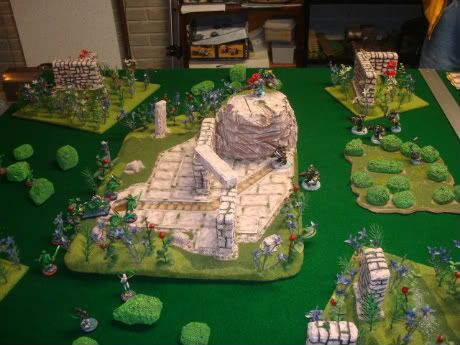
The early turns of the game were spent with my Khorne models meeting the mega-nobz head on. The fleshhound was the first to reach them and served as little more than a speed bump to the power clawed greenskins. It didn’t matter though, as its sacrifice was enough to allow for my bloodletters to reach the same orks and deliver their daemonic blades. It was an epic battle that left the ruins covered in green blood.
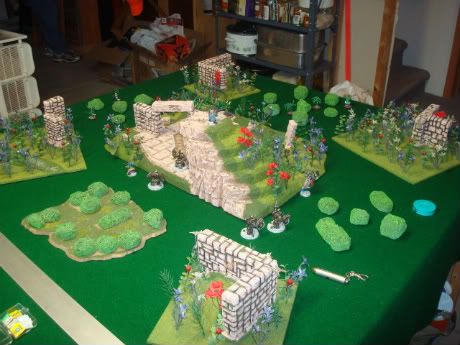
While this was happening, my Tzeentch and Slaanesh models each circled opposite sides of the center ruin. My horrors were weathering shots from a crazed ork that had climbed to the top of the ruins. On the other side, my daemonettes split to grab a corner of the table while seducing the last of the mega-orks that had failed to enter the ruins proper.
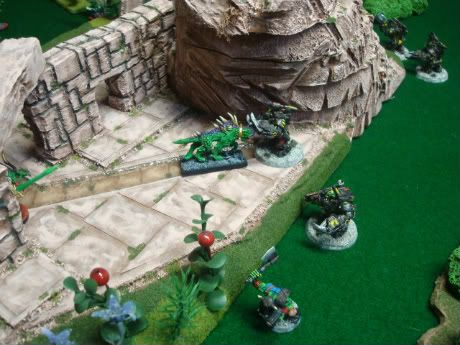
Middle Turns
The middle of the game became a cat-and-mouse affair between the daemons and orks. It was at this point that we really got a good taste of priority rules. Unlike 40K were you plan your moves around the sequence of play between you and your opponent, in Killzone, there is an advantage to taking risks and gambling on the priority rolls. There is also the potential for things to come crashing down when you set-up for those priority rolls and fail to make them.
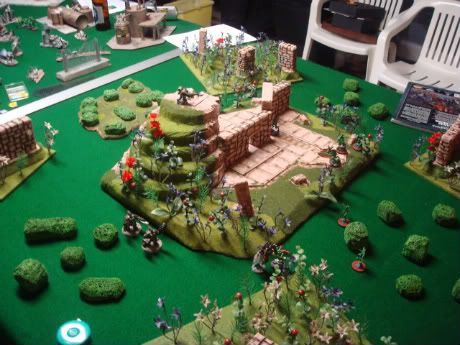
It was during the middle of the game that I found myself chasing the stormboy and remaining few orks. The problem for me was that they had the advantage of speed and firepower. I would move to engage, but the darn orks would just skip back and shoot another daemon.
Late Turns
The game really came to an end with the last of my daemonettes trying to kill the last of the orks. As we approached the conclusion of the game, I realized that my only chance of winning was to kill what Ernie had remaining. To the credit of the Killzone team, the rules for scoring really make it that a game cannot boil-down into a stalemate.
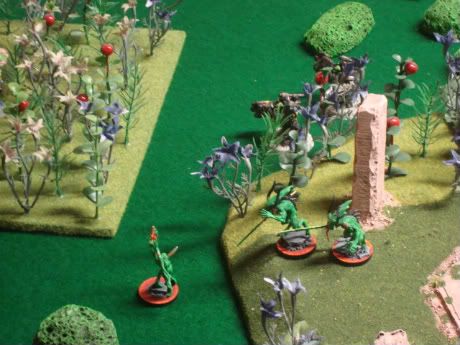
The game concluded with the last of my daemonettes reaching the few orks and dying to a combination of claws and crude weapons. As she faded back into the warp, her screams of anger could be heard across the planet. While back in Ernie’s basement, we were both laughing and reminiscing about how the Killzone rules had brought back fond memories of 2nd edition and Necromundo.

Conclusions
I am not going to claim that Killzone is a replacement for standard 40K, but I will say that it is a great supplement to the game and really brings something that 40K needs. I love the narrative feel of the missions and found myself getting very excited at the storytelling potential of this format.
Lessons Learned…
1. Every army needs to have troops that can close the distance with the enemy. My single flamer and fleshhound were not enough for getting at the orks who were clever enough to avoid the slower moving bloodletters and daemonettes.
2. While the errata for chaos daemons do kind of push you towards keeping daemons of the same god together or at least away from another god’s minions, I don’t need to move them like they are a single squad. Reflecting back on the game, I felt like I should have spread out my forces more and done a little more mixing between the gods.
3. Don’t overlook the cool upgrades and skills available. There were a couple of options that I ignored which may have helped with some of my models surviving longer. FNP on a flamer is one example.

No comments:
Post a Comment